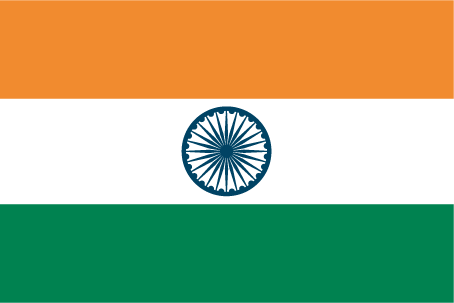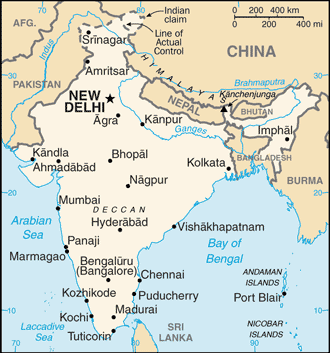Investing in India


India is developing into an open-market economy, yet traces of its past autarkic policies remain. Economic liberalization, including industrial deregulation, privatization of state-owned enterprises, and reduced controls on foreign trade and investment, began in the early 1990s and has served to accelerate the country's growth, which has averaged more than 7% per year since 1997. India's diverse economy encompasses traditional village farming, modern agriculture, handicrafts, a wide range of modern industries, and a multitude of services. Slightly more than half of the work force is in agriculture, but services are the major source of economic growth, accounting for more than half of India's output, with only one-third of its labor force. India has capitalized on its large educated English-speaking population to become a major exporter of information technology services and software workers. In 2010, the Indian economy rebounded robustly from the global financial crisis - in large part because of strong domestic demand - and growth exceeded 8% year-on-year in real terms. Merchandise exports, which account for about 15% of GDP, returned to pre-financial crisis levels. An industrial expansion and high food prices, resulting from the combined effects of the weak 2009 monsoon and inefficiencies in the government's food distribution system, fueled inflation which peaked at about 11% in the first half of 2010, but has gradually decreased to single digits following a series of central bank interest rate hikes. In 2010 New Delhi reduced subsidies for fuel and fertilizers, sold a small percentage of its shares in some state-owned enterprises and auctioned off rights to radio bandwidth for 3G telecommunications in part to lower the government's deficit. The Indian Government seeks to reduce its budget deficit to 5.5% of GDP in FY 2010-11, down from 6.8% in the previous fiscal year. India's long term challenges include widespread poverty, inadequate physical and social infrastructure, limited non-agricultural employment opportunities, insufficient access to quality basic and higher education, and accommodating rural-to-urban migration.
Ahmedabad Stock Exchange Limited - http://www.aseindia.org/
Bharat Petroleum - http://www.bharatpetroleum.com/
Bombay Stock Exchange Ltd - http://www.bseindia.com/
Calcutta Stock Exchange - http://www.cse-india.com/index.htm
Chevron India - http://www.chevron.com/countries/india/
Cochin Stock Exchange - http://www.cochinstockexchange.com/ - in Kochi, Kerala, India
Enam Securities - http://www.enam.com/
HDFC Bank - http://www.hdfcbank.com/
Hindustan Petroleum - http://www.hindustanpetroleum.com/
ICICI Bank - http://www.icicibank.com/
Idea Cellular - http://www.ideacellular.com/
Indian Energy Exchange - http://www.iexindia.com/
Indian Oil Corporation - http://www.iocl.com/
National Stock Exchange of India Limited - http://www.nseindia.com/
National Thermal Power Corporation - http://www.ntpc.co.in/
Oil & Natural Gas Corporation - http://www.ongcindia.com/
Ranbaxy Laboratories - http://www.ranbaxy.com/
Reliance Industries - http://www.ril.com/
Reserve Bank of India - http://www.rbi.org.in/
Satyam - http://www.satyam.com/
Tata Motors - http://www.tatamotors.com/
The Sanmar Group - http://www.sanmargroup.com/
TOTAL India - http://www.total.co.in/
UltraTech Cement - http://www.ultratechcement.com/
Wipro - http://www.wipro.com/
Countries that border India: Pakistan | China | Nepal | Bhutan | Bangladesh | Burma
Learn more:
Back to Country Investing



